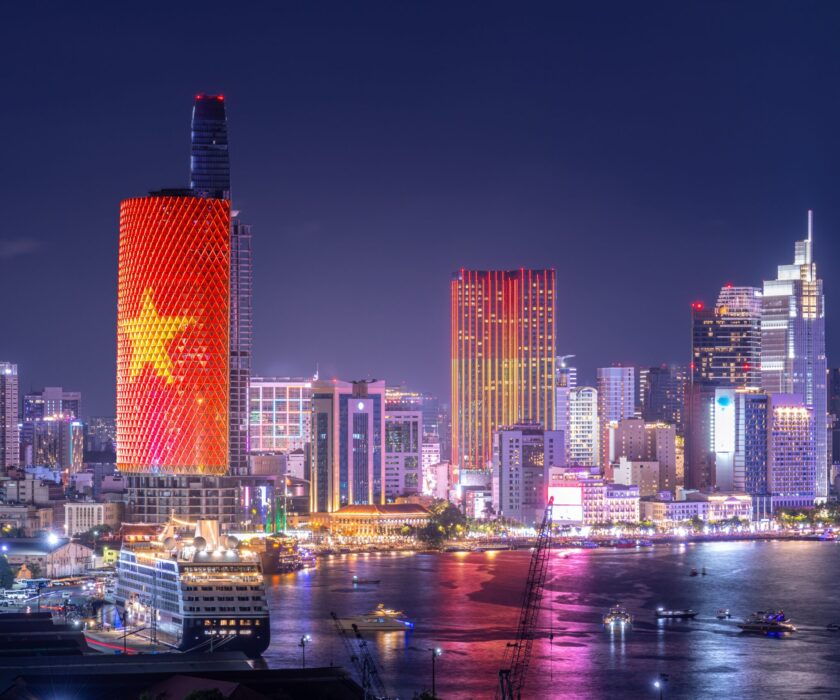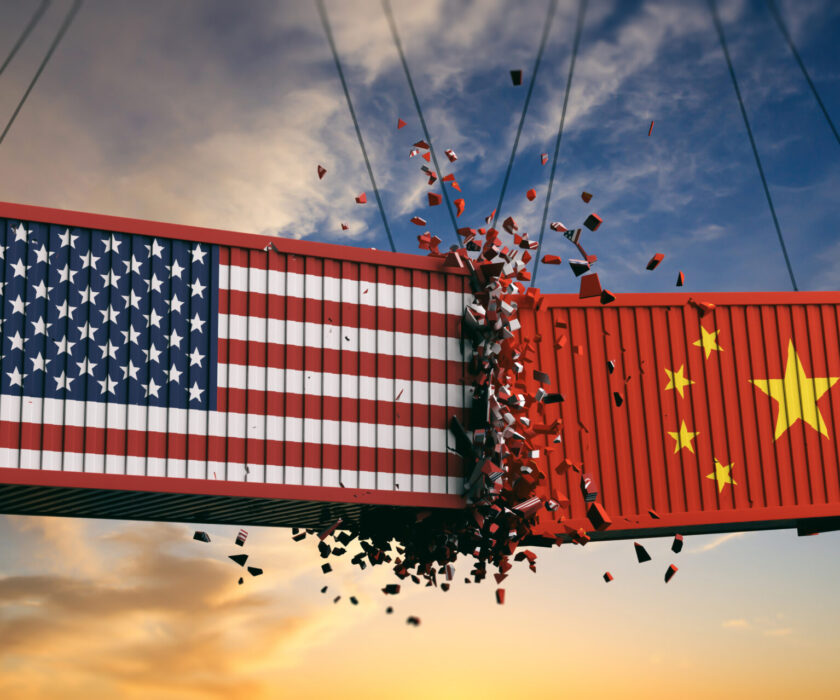Introduction
At North Star Global, we are committed to navigating the complexities of international trade to empower businesses worldwide. The tariff situation between the United States and China, two of the world’s largest economies, has been a defining factor in global commerce in 2025. As of May 14, 2025, a temporary truce has de-escalated a heated trade war, but underlying tensions and economic implications persist. This article provides a comprehensive analysis of the current tariff landscape, its historical context, recent developments, and the implications for businesses and the global economy, offering insights to help our clients and partners thrive in this dynamic environment.
Historical Context of US-China Trade Tensions
The US-China trade relationship has been fraught with challenges for decades, driven by trade imbalances, intellectual property concerns, and differing economic philosophies. The trade deficit, with the US importing significantly more from China ($438.9 billion in 2024) than it exports ($143.5 billion), has long been a point of contention. During President Donald Trump’s first term (2017–2021), tariffs were imposed under Section 301 of the Trade Act of 1974 and the International Emergency Economic Powers Act (IEEPA), targeting Chinese goods to address unfair trade practices and the fentanyl crisis. These tariffs, ranging from 25% on industrial goods to lower rates on consumer products, marked the beginning of a tit-for-tat escalation.
The Biden administration (2021–2025) maintained and expanded these tariffs, notably increasing rates on Chinese electric vehicles (100%), solar cells (50%), and critical minerals (25%) in 2024. China retaliated with tariffs on US agricultural products, coal, and liquefied natural gas, alongside non-tariff measures like export controls on rare earth minerals. By January 2025, when President Trump returned to office, the stage was set for a renewed escalation, with US tariffs on Chinese imports reaching unprecedented levels.
The 2025 Tariff Escalation
Upon taking office on January 20, 2025, the second Trump administration swiftly implemented aggressive trade measures. On February 4, a 10% tariff was imposed on Chinese goods, followed by a 20% tariff in March, citing China’s alleged failure to curb fentanyl precursor exports. On April 2, dubbed “Liberation Day,” the administration announced a 34% reciprocal tariff on Chinese imports, calculated in response to China’s perceived 67% tariff on US goods. This was followed by rapid increases on April 5 (10%), April 9 (74%), and April 10 (41%), culminating in a staggering 145% average tariff rate on Chinese imports by April 11. The US also terminated the “de minimis” exemption for low-value Chinese imports effective May 2, further tightening trade restrictions.
China responded with equal vigor. By April 10, China’s average tariff on US exports reached 147.6%, covering 100% of US goods, up from 58.3% earlier in the year. Beijing imposed an 84% retaliatory tariff on April 10, alongside non-tariff countermeasures, including export restrictions on rare earth minerals, placement of US firms on an “unreliable entity list,” and an anti-monopoly probe into US chemical giant DuPont. These actions effectively halted bilateral trade, with Treasury Secretary Scott Bessent describing the situation as “the equivalent of an embargo.”
The global economic impact was immediate. Supply chains reoriented, businesses faced higher costs, and consumers braced for price hikes. The International Monetary Fund downgraded its 2025 global growth forecast, warning of a potential US recession. In China, industries like furniture, toys, and textiles faced existential threats, with Nomura estimating a potential loss of 16 million jobs. The trade war’s ripple effects threatened global markets, prompting urgent calls for de-escalation.
The Geneva Breakthrough: A 90-Day Tariff Truce
On May 10–11, 2025, US and Chinese officials met in Geneva, Switzerland, for high-stakes negotiations hosted by the Swiss government. Led by Treasury Secretary Scott Bessent and US Trade Representative Jamieson Greer for the US, and Vice Premier He Lifeng for China, the talks marked the first face-to-face engagement since the April escalation. The outcome, announced on May 12, was a 90-day tariff truce, effective May 14, 2025, aimed at de-escalating tensions and fostering further dialogue.
Under the agreement, the US reduced its tariffs on Chinese imports from 145% to 30%, comprising a 10% baseline tariff on all imports and a 20% fentanyl-related tariff imposed earlier in 2025. China, in turn, lowered its tariffs on US goods from 125% to 10% and committed to suspending non-tariff countermeasures, including rare earth export restrictions and actions against US firms. Both sides agreed to establish a “consultation mechanism” for ongoing trade discussions, with future talks planned in the US, China, or a third country.
The joint statement emphasized “mutual opening, continued communication, cooperation, and mutual respect,” signaling a shared desire to avoid decoupling. Bessent noted, “Neither side wants a decoupling, and what had occurred with these very high tariffs was the equivalent of a trade embargo.” Chinese state media described the talks as “candid, in-depth, and constructive,” with He Lifeng highlighting “substantial progress.” The agreement also adjusted three US executive orders (April 2, 8, and 9) and China’s corresponding tariff announcements, rolling back most post-April 2 measures.
Economic and Market Reactions
The tariff truce sparked immediate optimism in global markets. On May 12, the S&P 500 rose 2.7%, the Dow Jones Industrial Average gained 981 points (2.4%), and the Nasdaq surged 3.7%. In Asia, Hong Kong’s Hang Seng Index climbed over 3%, reflecting relief among investors. European markets posted modest gains, and oil prices rose, with Brent crude reaching $65.66 per barrel. The US dollar index also strengthened, up 1.1% to 101.46.
However, analysts cautioned that the truce is temporary and does not address underlying issues. The 30% US tariff rate, while significantly lower, remains high compared to pre-2025 levels, and China still faces 25% tariffs from Trump’s first term and Biden’s 100% duties on electric vehicles. The Budget Lab at Yale estimated that the post-truce US average effective tariff rate is 17.8% (pre-substitution), the highest since 1934, with a long-term rate of 16.4% after import shifts. Consumer prices are projected to rise 1.7% in the short term, equivalent to a $1,200 per household tax increase in 2025, according to the Tax Foundation.
For businesses, the truce offers breathing room but not certainty. Jens Eskelund, president of the European Union Chamber of Commerce in China, noted, “Businesses need predictability to maintain normal operations and make investment decisions.” Retailers, wary of the 30% tariff, may adopt a wait-and-see approach, potentially driving up consumer prices for goods like cars, groceries, and electronics. In China, the tariff reduction boosts export competitiveness, particularly for high-tech manufacturing reliant on rare earths, but the 90-day timeline keeps pressure on negotiators to deliver a lasting agreement.
Implications for Global Businesses
At North Star Global, we recognize that the US-China tariff situation profoundly impacts our clients’ operations. The temporary truce provides opportunities but also challenges:
-
Supply Chain Adjustments: The high tariffs forced businesses to diversify supply chains away from China, with some shifting to Vietnam, India, or Mexico. The truce may pause this trend, but companies should maintain contingency plans given the 90-day timeline.
-
Cost Management: The 30% US tariff and 10% Chinese tariff, while reduced, still increase costs. Businesses must optimize pricing strategies and explore tariff exemptions or alternative sourcing to mitigate impacts.
-
Market Access: China’s commitment to suspend non-tariff measures, such as rare earth restrictions, benefits high-tech and manufacturing sectors. However, unresolved issues like intellectual property and market access barriers require vigilance.
-
Investment Decisions: The truce reduces immediate risks but does not eliminate uncertainty. Companies should conduct scenario planning, factoring in potential tariff reinstatement or new trade barriers post-August 2025.
-
Fentanyl and Geopolitical Risks: The US’s 20% fentanyl-related tariff remains, reflecting broader geopolitical tensions. Businesses must monitor US-China relations, including issues like TikTok’s potential sale and China’s role in global supply chains.
North Star Global’s Strategic Recommendations
To navigate this evolving landscape, North Star Global offers the following recommendations:
-
Leverage Data Analytics: Use our proprietary trade analytics platform to assess tariff impacts on your supply chain and identify cost-saving opportunities.
-
Engage in Policy Advocacy: Collaborate with industry associations to influence US-China trade negotiations, ensuring your interests are represented.
-
Diversify Markets: Expand into emerging markets to reduce reliance on US-China trade routes, leveraging our global network for market entry support.
-
Monitor Negotiations: Stay informed on the consultation mechanism’s progress through our real-time trade alerts, enabling proactive decision-making.
-
Optimize Operations: Partner with our logistics experts to streamline supply chains, minimizing tariff-related disruptions.
Looking Ahead
The US-China tariff truce is a critical step toward de-escalation, but it is not a resolution. The 90-day pause, expiring in mid-August 2025, sets a tight deadline for negotiators to address deep-seated issues, including trade imbalances, fentanyl, and market access. President Trump has signaled a desire to “open up” China to American businesses, while China seeks to protect its export-driven economy. The outcome of these talks will shape global trade for years to come.
At North Star Global, we view this moment as an opportunity for businesses to adapt and innovate. By providing actionable insights and tailored solutions, we empower our clients to turn challenges into competitive advantages. As the US and China navigate this pivotal juncture, North Star Global remains your trusted partner, guiding you toward success in a complex global marketplace.
Conclusion
The tariff situation between the US and China in 2025 reflects the delicate balance of economic competition and cooperation. The Geneva truce offers a reprieve, but the path to a sustainable trade relationship remains uncertain. North Star Global is committed to helping businesses navigate these challenges, leveraging our expertise to drive growth and resilience. Together, we can chart a course through the tariff storm, ensuring your business shines brightly on the global stage.
Sources: The New York Times, Reuters, NPR, CNBC, The White House, The Budget Lab at Yale, Tax Foundation, Newsweek, BBC


